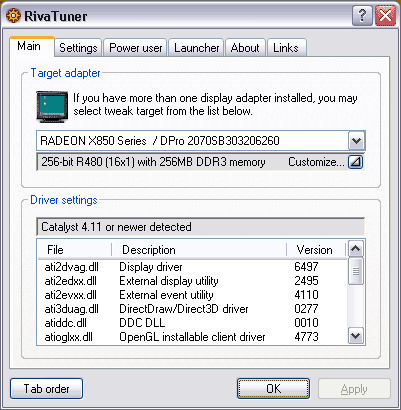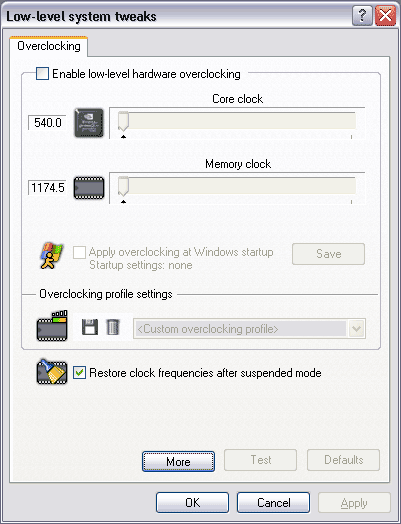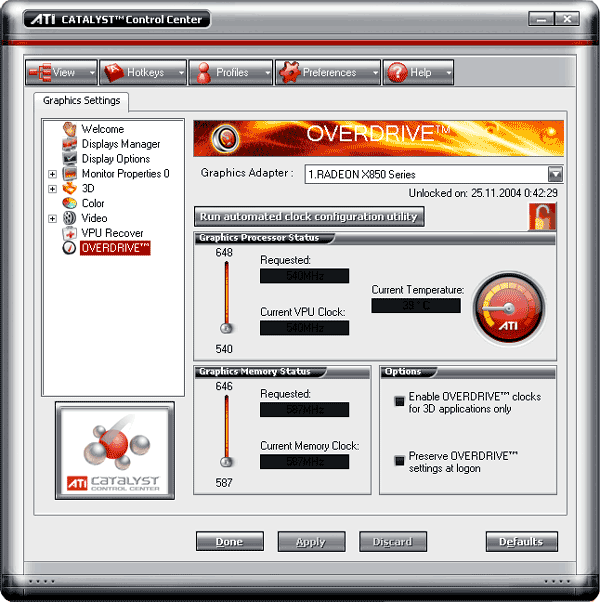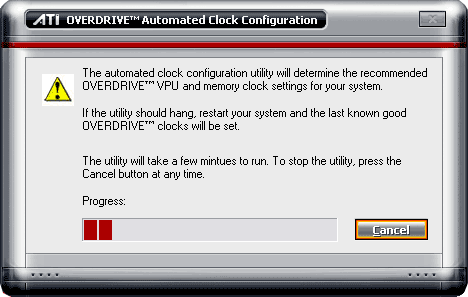 |
||
|
||
| ||
Contents
ATI TechDays
The autumn announcement of new ATI desktop products has been anticipated, because both the Canadian company and the Californian NVIDIA have actually finished their 6 month cycle. Though for the first time it was of a nominal character, as these High-End products actually appeared on sale much later, and some of them, such as GeForce 6800 Ultra, RADEON X800XT PE, are still rare and at very high prices. It goes without saying that after the shocking statements made by both companies in spring, who offered actually twice as powerful solutions in comparison with the previous models, we shouldn't expect such high performance 3D accelerators heavily outscoring their predecessors. Indeed, ATI has offered something different this time. We don't know what solutions NVIDIA will offer. The essence of announcements from the Canadian company lies in offering the consumers almost the same series of models but of a greater scale. That is the core suffered few changes, but the process technology was fine tuned, and we are promised mass deliveries of the novelties in the nearest future. But let's not put the cart before the horse. It's interesting that before the announcement ATI arranged sort of a briefing or a conference (choose what you like) for the press. The title is the same as it was in spring before the announcement of R420 – ATI Technology Days. The event has taken place in Munich (Germany) November 23, 2004 in the premises of PlazaMedia. (Slide 1 shows yours truly at the entrance to this strange building). It looks very much like old workshops of some enterprise were renovated, and PlazaMedia set up a video studio here, which was rented for a conference day by the german ATI office. There were a lot of colleagues from various editions (Slide 2), Russia has been represented by iXBT.com and 3DNews.ru (in the person of Andrey Kuzin, the project leader). I shall not go into details about the event in general, we are going to publish materials about the two conferences arranged by ATI in London (November 17) and in Munich (I have already told you a little about it). I'll touch upon only that part, which covered the new video cards from the R480/R430 series. The new video cards were presented by an ATI employee Matt Skynner (Slides 3 and 4). At first he provided general information (on the left photo) on the series of video cards from ATI based on PCI-Express (Slide 5), all new cards to be released only for this interface. Matt also demonstrated ATI forecasts concerning the prospects of the PCI-E sector on the whole (Slide 6) Sure thing, such an event cannot ignore marketing :). After that he proudly demonstrated that ATI is now a leader on the desktop market (Slide 7) Then actually followed a repetition of information on the architecture of 16-pipe solutions from ATI, so you'll hardly find anything new there, though it may be interesting to those who read about such cards for the first time (Slides 8-11). Slide 11 demonstrated the ATI strategy: to manufacture the entire series of solutions of different price levels based on the new products of the X8xx series. The following Slides 12-15 go into detail about the features of the "old-new" solution. And now we come up to the most important. Firstly, there will be two silicons: R480 and R430. They will be manufactured by different process technologies. While R480 is still the same 0.13-micron low-k, R430 is already 0.11-micron. Three video cards will be released based on R480 (Slide 16): It's interesting to note that the Middle End solution RADEON X850XT is actually almost on a par with RADEON X800 XT PE in frequencies and their recommended prices are also the same. But I want to repeat, the point is that the new silicons are fine tuned so that all the products must be produced on a mass level (well, with these prices we can speak only of relatively mass sales). As you can see, the senior "sub-series" has a junior solution priced at 399 USD (recommended price), which actually repeats what ATI offered in spring with the only exception that there are three cards now instead of two. And here is the main difference from the spring announcement. (Slides 17 and 18) The Canadian company introduces two video cards based on R430 in the price segment from 299 to 350 USD: X800XL (new suffix) and X800 without a suffix. As you can see, a 16-pipe solution can be bought already for $350. In conclusion the speaker presented graphs of relative performance of the new video cards obtained in ATI test lab (Slides 19 and 20): So, we are going to have the following video cards in the PCI-Express
sector:
That is at the present moment ATI covers a larger sector of video cards from 250 USD and higher than NVIDIA (we are waiting for the announcements from this company). We shall gradually review all the new video cards as they will appear in our test lab. Today we have tested the flagship – X850XT PE. As its core is based on the previous solution of R420, we bring forward a list of articles, which also includes reviews of video cards based on this chip. Theoretical materials and reviews of video cards, which
concern functional properties of the GPU
So, a 16-pipe solution at 540/1180 MHz. We can see very few differences from the previous flagship X800XT PE (520/1120 MHz). So one can already assume that the performance difference will not be that significant. The card is slightly redesigned, but let's not put the cart before the horse.
Video card
We can see that the PCB has almost no differences from the previous solution except for the cooling system (no wonder).
And here is the graphics processor. Marked code name. The chip is a little vertically elongated, this is usual for all PCI-E solutions. Thanks to responsiveness of Alexei Nikolaichuk, the author of RivaTuner,
this program already supports X850: 
 It can even monitor this video card's operation:  Rotational speed of the cooler obviously does not exceed 4% of maximum rpm even at peak load in 3D. I have already mentioned that the cooler is almost noiseless. Installation and Drivers
Testbed configurations:
VSync is disabled. It should be noted that both companies have enabled trilinear filtering optimizations in their drivers by default. Let's analyze some peculiarities of driver settings, which just
appeared with the release of X850.  What's the most important, now these video cards can be overclocked
in an authorized way in their drivers! The OverDrive settings now
include the overclocker and temperature indicators. You can also launch
a new utility from there, which automatically detects the upper limit
of frequency overclocking:  It has several glitches so far, so we are waiting for debugged drivers.
Test results
Before giving a brief evaluation of 2D, I will repeat that at present there is NO valid method for objective evaluation of this parameter due to the following reasons:
What concerns the combo of our sample under review and Mitsubishi
Diamond Pro 2070sb, this card demonstrated the excellent
quality in the following resolutions and frequencies:
Test results: performance comparison
We used the following test applications:
If you want to get the demo-benchmarks, which we use, contact me at my e-mail. We shall not review the quality issues today. A separate article
will be devoted to this topic. Considering the release of Half-Life2,
there is a point in reviewing these issues in this game, and at the
same time we'll have an opportunity to compare state-of-the-art accelerators.
FarCry, demo01
Half-Life2: ixbt01 demo
DOOM III
The other graphs with test results are published on a separate page. ConclusionsThe most important conclusion: we shouldn't expect anything cardinally new from ATI now! In the first place the company is concerned with market saturation and the shortage of video cards based on R420 (with 16 pipelines). That's why today's attack on the market is intended to capture more various niches. R480/430 chips contain nothing cardinally new from the architectural point of view. We can only note that the new solutions have an integrated system that switches off the 3D-part of the chip when operating in 2D. It must have a positive effect on heat emission and temperature conditions of video cards, for example in office applications. Previously, a similar feature to disable parts of VPU units to reduce heat emission and power consumption could have been found only in some mobile solutions from ATI. The test results demonstrate that the new ATI flagship takes the first place in all applications used in this article, except for DOOM3. I'll emphasize again that the 3D quality aspects will be covered in a separate article, which will be released later. Meanwhile we'll be looking forward to the promised saturation of the market with ATI products, which directly depends on the expansion of the PCI Express graphics market, because you can now forget about new AGP video cards. At least ATI does not plan such new video cards. Though this fact contradicts the ATI forecasts concerning the PCI Express market development. We are not saying good-bye, because the next article will go into details of all the events at ATI Technology Days, including the Gaming Summit forum held in London. I hope you'll find these articles interesting to read. In our 3Digest you can find more detailed
comparisons of various video cards.
We express our thanks to the representative office of
ATI Technologies in Russia for arranging our visit to the ATI events. Write a comment below. No registration needed!
|
Platform · Video · Multimedia · Mobile · Other || About us & Privacy policy · Twitter · Facebook Copyright © Byrds Research & Publishing, Ltd., 1997–2011. All rights reserved. | |||||||||||||||||||||||||||||||||||||||||||||||||||||||||||||||||||||||||||||||